- List of select publications
- Biography
- Teaching
- Research areas
- Professional memberships
- Personal data
- List of select projects
- Past employments
Biography
Dr. Mirko Poljak is an Associate Professor at the Faculty of Electrical Engineering and Computing, University of Zagreb. At this institution, he received the PhD degree in the field of nanoelectronics in May 2013 under the supervision of prof. dr. sc. T. Suligoj (FER) and prof. dr. sc. K. L. Wang (UCLA). In summer 2009 he attended the European School on Nanosciences and Nanotechnologies in Grenoble (France). In the academic year 2011/2012 he was a Visiting Researcher - Fulbright Fellow - in the Device Research Lab, Dept. of Electrical Engineering, University of California Los Angeles (USA). In December 2014 and June 2015 he did research visits at the Atomistic Simulation Centre, Queen's University Belfast, Belfast (UK).
Dr. Poljak's research is focused on theoretical understanding and developing models and numerical simulators for the design, analysis and optimization of electron devices at the nanoscale. During his doctoral studies, he worked on carrier transport in low-dimensional nanoelectronic devices such as UTB SOI, FinFET and UTB InGaAs-OI. During his stay at UCLA, he investigated electronic and transport properties of graphene and graphene nanoribbons, both experimentally and theoretically. His current research interests include the development of an atomistic quantum-transport numerical tool (TCAD) for the analysis of nanodevices based on 2D/1D materials for applications in nanoelectronics. Dr. Poljak has authored more than 30 papers in international journals and more than 45 conference papers. His papers have been cited over 700 times according to the Google Scholar database.
He serves as reviewer for Nature Electronics, IEEE Electron Device Letters, IEEE Transactions on Electron Devices, Applied Physics Letters, 2D Materials, Nanoscale, Journal of Applied Physics, Solid-State Electronics, Nanomaterials, etc. Dr. Poljak is a Senior Member of IEEE since 2019, and member of IEEE Electron Devices Society and Croatian Society MIPRO since 2007. In the period 2018-2021 he was Chair, in 2022-2023 Vice-Chair, and from 2024 again Chair of the Joint ED/SSC Chapter, IEEE Croatia Section. He is member of the Program Committee for MIPRO-MEET from 2021. Dr. Poljak was awarded the National Science Award (2017), Annual Science Award by the Association of University Professors in Zagreb (2017), FER's Science Award for World-Class Research Achievement (2016), Vera Johanides Award by the Croatian Academy of Engineering (2014), FER's Silver Medal and "Josip Lončar" Award for Outstanding PhD Thesis (2013), FER's Science Award for Outstanding Research Achievements (2013) and the prestigious Fulbright Fellowship by the US Government (2011). He is the author of the university textbook "Quantum Transport on the Nanoscale" (Element, Zagreb, 2023).
Teaching
University undergraduate
- Electronic Devices and Circuits Practicum (Lecturer in charge)
- Electronic Devices and Circuits Practicum (Lecturer in charge)
- Electronics 1 (Lecturer in charge)
- Electronics 1 (Lecturer in charge)
- Electronics 2 (Lecturer in charge)
- Electronics 2 (Lecturer in charge)
- Fundamentals of Electronics (Lecturer in charge)
- Fundamentals of Electronics (Lecturer in charge)
- Micro and Nano Electron Devices (Lecturer in charge, Lecturer in charge)
- Micro and Nano Electron Devices (Lecturer in charge)
- BSc Thesis (Lectures)
- BSc Thesis (Lectures)
- BSc Thesis (Lectures)
- BSc Thesis (Lectures)
- Final BSc Project (Lectures)
- Project (Lectures)
- Project (Lectures)
- Project C (Lectures)
- Project E (Lectures)
- Software Design Project (Lectures)
- Software Design Project (Lectures)
University graduate
- Advanced Micro and Nano Electronic Devices (Lecturer in charge)
- Applied Quantum Mechanics (Lecturer in charge)
- Fundamentals of microelectronics (Lecturer in charge)
- Graduation Thesis (Lectures)
- Graduation Thesis (Lectures)
- Project (Lectures)
- Project (Lectures)
- Project (Lectures)
- Project (Lectures)
- Research Seminar (Lectures)
- Seminar 1 (Lectures)
- Seminar 2 (Lectures)
Postgraduate doctoral study programme
- Quantum fundamentals of optical and electronic devices (Lecturer in charge)
Competences
-
Circuits and systems
Circuit simulation Integrated circuit modeling Very large scale integration MOS integrated circuits Silicon-on-insulator Integrated circuit technology CMOS technology Logic devices -
Electron devices
Quantum computing Quantum well devices Quantum wells Semiconductor devices Quantum dots Semiconductor device modeling Transistors Tunneling Resonant tunneling devices -
Engineering – general
Electrical engineering -
Mathematics
Linear algebra Boundary conditions Differential equations Eigenvalues and eigenfunctions Boltzmann equation Finite difference methods Iterative methods Numerical analysis Newton method Numerical simulation Sparse matrices -
Nanotechnology
Nanoelectronics Nanomaterials Nanoscale devices -
Instrumentation and measurement
Semiconductor device measurement -
Science – general
Quantum mechanics Density functional theory Quantum capacitance Quantum entanglement Schrodinger equation Tunneling Solid-state physics -
Computers and information processing
Parallel programming
Professional memberships
Research interests:
- advanced nano-devices for electronics at the nanoscale
- physical micro and nanoelectronics, semiclassical and quantum transport
- numerical modeling and simulation - from atomistic scale to compact models for circuit simulation
- parallel programming and computing in hybrid environments (C, OpenMP, MPI, BLAS, LAPACK, Nvidia CUDA)
- 2D and 1D materials and new computing paradigms (topological quantum computing electronics, spintronics, memristors)
Memberships:
- IEEE Senior Member
- IEEE, IEEE Electron Devices Society
- Croatian Society MIPRO
Personal data
List of select projects
- PI, Computational design of nanotransistors based on novel 2D materials (2020-2025, sponsor: HRZZ-Croatian Science Foundation, UIP Grant)
- PI, Graphene on germanium (2022-2024, bilateral, IHP Frankfurt, Germany, sponsor: MZO-DAAD)
Past employments
Appointments
2021/05 - Associate Professor (FER)
2017/06 - Assistant Professor (FER)
Conferment of Scientific Grades
2020/11 - Scientific Advisor
2017/06 - Senior Research Associate
2014/03 - Research Associate


 Pristupačnost
Pristupačnost